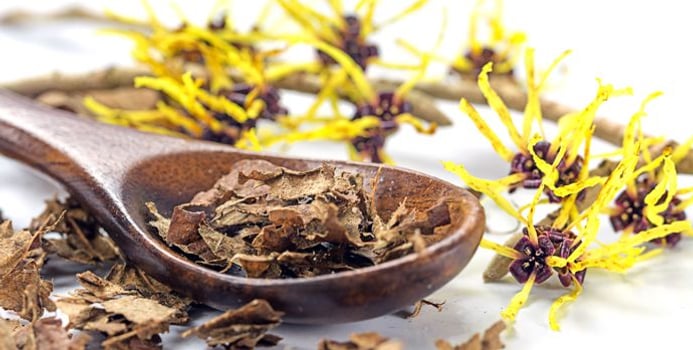The leaves and bark of witch hazel (hamamelis virginiana) are used to create a medicinal product which can be used to treat a number of conditions, from diarrhea to skin injuries. It is the latter which the plant has become associated with, and many people swear by witch hazel and the benefits it has for the skin and the scalp. It has a soothing effect and can help fight inflammation and bacteria, making it a popular natural remedy to treat acne, eczema or psoriasis.
Erin Gilbert, director of Gilbert Dermatology told Allure, "The [aid] of preparations made from its leaves and bark have been used for ages, and it has a number of skin benefits including being soothing, acting as an anti-inflammatory, and having antioxidant properties.”
According to Healthline, witch hazel contains beneficial chemical compounds including gallic acid and tannins which have astringent effects. WebMD expands on this point, noting that when applied topically it can reduce swelling and help to restore the skin.
How do you use witch hazel?
Witch hazel is most commonly used topically and applied directly to the skin with extracts or ointments (and it often sold in over-the-counter products). Some people also use witch hazel as a toner.
It can be ingested, with Healthline noting that small amounts can be added to herbal teas and drunk to help treat other conditions. However, Very Well Health notes that oral intake could have unfavorable results.
Is there anything to be concerned about?
According to Allure, like any ingredient individuals can have an unwanted reaction when using witch hazel, for this reason, it’s important to do a patch test on a small area of skin beforehand. However, the publication notes that there have been no reported adverse effects.
Very Well Health also notes that witch hazel should not be used to treat chronic conditions.
[Image via Shutterstock]



